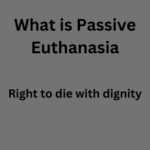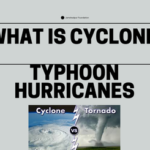“CERVAVAC”, for the prevention of cervical cancer: Basics Explained

Union Minister of State (Independent Charge) Dr Jitendra Singh announces India’s first indigenously developed vaccine, “CERVAVAC”, quadrivalent Human Papilloma Virus (qHPV) vaccine , for the prevention of cervical cancer.
Cervical cancer ranks as the 2nd most prevalent cancers in India and accounts for nearly one-fourth of the world’s cervical cancer deaths despite being largely preventable. He said, current estimates indicate that every year approximately 1.25 lakhs women are diagnosed with cervical cancer, and over 75 thousand die from the disease in India, and 83 % of invasive cervical cancers are attributed to HPVs 16 or 18 in India, and 70% of cases worldwide.
The Minister said, the most promising intervention for preventing cervical cancer is vaccination against human papillomavirus (HPV). It is estimated that HPV types 16 and 18 (HPV-16 and HPV-18) together contribute to approximately 70% of all invasive cervical cancer cases worldwide.
India has come out as the major contributor to cervical cancer in Asia, a study published in The Lancet journal on revealed. According to the study, more than 58 percent of all cases of cervical cancer globally were estimated in Asia, with India accounting for the highest number of cases at 21 percent followed by China at 18 percentCervical cancer is a type of cancer that occurs in the cells of the cervix — the lower part of the uterus that connects to the vagina.
Various strains of the human papillomavirus (HPV), a sexually transmitted infection, play a role in causing most cervical cancer. Signs and symptoms of more-advanced cervical cancer include:
Vaginal bleeding after intercourse, between periods or after menopause; Watery, bloody vaginal discharge that may be heavy and have a foul odor and Pelvic pain or pain during intercourse
LEARNING FROM HOME/ WITHOUT CLASSES/ BASICS Cancer is a class of diseases characterized by out-of-control cell growth. There are over 100 different types of cancer, and each is classified by the type of cell that is initially affected. Cancer harms the body when altered cells divide uncontrollably to form lumps or masses of tissue called tumors (except in the case of leukemia where cancer prohibits normal blood function by abnormal cell division in the blood stream). Tumors can grow and interfere with the digestive, nervous, and circulatory systems and they can release hormones that alter body function. Tumors that stay in one spot and demonstrate limited growth are generally considered to be benign. More dangerous, or malignant, tumors form when two things occur: A cancerous cell manages to move throughout the body using the blood or lymphatic systems, destroying healthy tissue in a process called invasion-that cell manages to divide and grow, making new blood vessels to feed itself in a process called angiogenesis. When a tumor successfully spreads to other parts of the body and grows, invading and destroying other healthy tissues, it is said to have metastasized. This process itself is called metastasis, and the result is a serious condition that is very difficult to treat. Normal cells in the body follow an orderly path of growth, division, and death. Programmed cell death is called apoptosis, and when this process breaks down, cancer begins to form. Unlike regular cells, cancer cells do not experience programmatic death and instead continue to grow and divide. This leads to a mass of abnormal cells that grows out of control. Carcinogens are a class of substances that are directly responsible for damaging DNA, promoting or aiding cancer. Tobacco, asbestos, arsenic, radiation such as gamma and x-rays, the sun, and compounds in car exhaust fumes are all examples of carcinogens. When our bodies are exposed to carcinogens, free radicals are formed that try to steal electrons from other molecules in the body. Theses free radicals damage cells and affect their ability to function normally.



0 Comments